Posts Tagged ‘Woolly buggers & variants’
{{start}}
My first fish on fly fell to the magic of a Woolly Bugger and many have gone the same way since then.
My understanding is that the Woolly Bugger has its origins in America where it appears to be tied, as a leach imitation. having said that there is also an English fly with bead chin eyes called a Dog Nobler that is very similar to a traditional Woolly Bugger. Whatever the name or origin this style of fly is a great fish taker in a wide range of conditions. There are probably more variations to the Woolly Bugger than I have had breakfasts. Some are over-dressed some under-dressed, some weighted others not, on all sorts of hooks and in all sorts of colour combinations. Most will work sometimes but many are “once of” flies that don’t consistently take or attract fish.
I have tried out many over the years and now carry a range of Woolly Buggers that have specific applications. In each case they have a reason for being and they have been proven over time to take or attract fish.
My basic tie for a Woolly Bugger is similar to so many others. Having said that I do have a few quirky criteria that I strictly adhere to every time I tie a Woolly Bugger.
Throughout this web site I describe my woolly buggers according to size as set out in the following table:
MINI = approximately 20mm
SMALL = approximately 30mm
MEDIUM = approximately 40mm
STANDARD = approximately 50mm
LARGE = approximately 60mm
XL = approximately 70mm
{{end}}

{{+1}}Shrek – Chatto’s viva{{-1}}
{{start}}
It seems that these days the term 'VIVA' has been given to the very popular and successful colour combination of light green or chartreuse and black.{{end}}
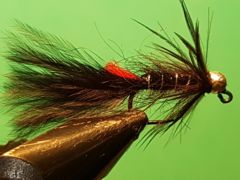
{{+1}}Silver TBH CDC black/red MKII fuzzel bugger{{-1}}
{{start}}
MKII woolly buggers without any weight are amongst my favourite top dropper flies when loch style fly fishing in lakes and these smaller versions with a silver tungsten bead are up there amongst my favourite river flies.{{end}}
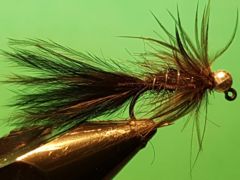
{{+1}}Silver TBH CDC black sparkle fuzzel bugger{{-1}}
{{start}}
This one of the 4 colours of TBH jig buggers that I carry in my river fly box. It's a great buggy looking fly that sink well and swims hook point up so less likely to get hooked up on the bottom othan flies that swim hook point down.{{end}}
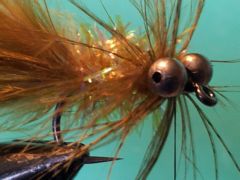
{{+1}}Double eyed, soft hackle dog nobbler{{-1}}
{{start}}
At the same time the woolly bugger was evolving in the US in England a similar fly that became known as a dog nobbler was also evolving. Dog nobbler flies were heavily weighted for use in deeper water, were generally not palmered with a hackle and often were tied with bead chain eyes.{{end}}
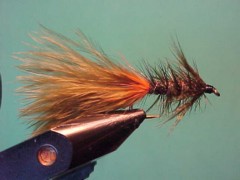
{{+1}}Skirted woolly bugger – Chatto’s original{{-1}}
{{start}}
Whilst not tied to imitate any natural food source it's a very buggy looking fly with heaps of trigger points including the marabou tail, the soft body and front hackles as well a the skit itself. In particular I like to incorporate blood red or orange skirts which are suggestive in the case of a red skirt as bleeding from around the base of the tail or the claws depending on what the fly is taken as or in the case of an orange skirt as a fish roe.{{end}}
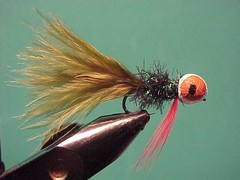
{{+1}}Lakes – loch style … all pumped up / booby pumping{{-1}}
{{start}}
There is nothing new about "Booby Pumping". English fly fishers have been doing it for years and for a time it was considered so successful in some impoundments that it was banned. I have been fishing boobies for quite a few years and booby pumping has even won a couple of competitions for me.{{end}}













